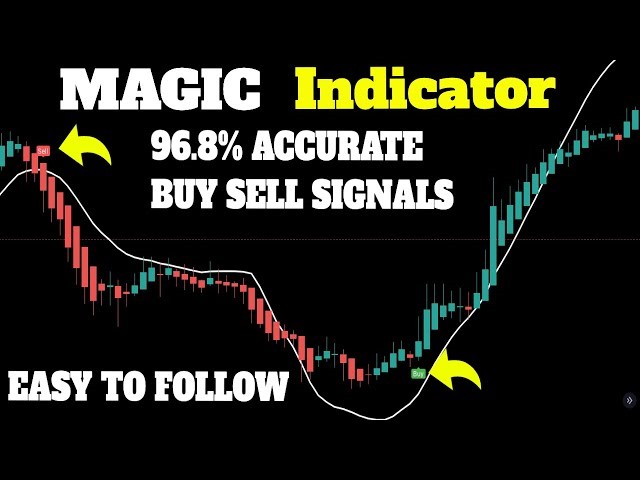
TradingView offers a wide range of effective tools specifically designed to assist day traders in making better decisions. These tools include trend identification, momentum assessment, volatility tracking, and market participation insights. Additionally, there are tools available to evaluate trend strength, support, resistance, and fair value. When used strategically and considered within the broader market context, these tools can be extremely helpful in making informed and timely day trading decisions. In this article, the experts at TU have discussed the 7 best day trading and scalping indicators offered by TradingView. They have also provided information on the key features of these indicators and suggested entry and exit points, giving traders a comprehensive overview to incorporate them into their trading strategies.
Are you a day trader or scalper looking for the best scalping indicators to enhance your trading strategies? Look no further! In this article, we will explore the top 7 day trading and scalping indicators available on TradingView.
۱٫ Moving Average (MA):
The Moving Average indicator helps identify trends by smoothing out price fluctuations over a specific period. It is widely used to determine support and resistance levels and to generate buy or sell signals.
۲٫ Relative Strength Index (RSI):
RSI measures the speed and change of price movements. It helps traders identify overbought or oversold conditions in the market, indicating potential trend reversals.
۳٫ Bollinger Bands (BB):
Bollinger Bands consist of a moving average and two standard deviation lines. They help traders identify volatility and potential price breakouts. When the price moves near the upper band, it suggests overbought conditions, while the lower band indicates oversold conditions.
۴٫ Volume Profile:
Volume Profile displays the trading volume at different price levels over a specific period. It helps traders identify areas of high and low liquidity, which can be useful for determining support and resistance levels.
۵٫ MACD (Moving Average Convergence Divergence):
MACD is a trend-following momentum indicator. It consists of two lines, the MACD line and the signal line. Traders use MACD to identify potential trend reversals, generate buy or sell signals, and measure the strength of a trend.
۶٫ Fibonacci Retracement:
Fibonacci Retracement is a technical analysis tool that helps traders identify potential support and resistance levels based on the Fibonacci sequence. It is useful for determining entry and exit points in the market.
۷٫ Stochastic Oscillator:
The Stochastic Oscillator measures the momentum of price movements. It helps traders identify overbought and oversold conditions, indicating potential trend reversals.
By incorporating these top 7 day trading and scalping indicators into your trading strategies, you can gain valuable insights into market trends, volatility, and potential entry and exit points with best trading signals. Remember to consider these indicators within the broader market context and use them strategically to make informed and timely trading decisions.
TradingView provides a user-friendly platform where you can easily access and utilize these indicators. So, why wait? Start exploring these powerful tools and take your day trading and scalping to the next level!
TradingView offers a diverse range of effective tools that are specifically designed to cater to the needs of day traders who are seeking enhanced decision-making capabilities. These tools are meticulously crafted to provide valuable assistance in various aspects of day trading. For instance, the trend identification tool helps traders identify and analyze market trends, enabling them to make more accurate predictions about future price movements. By understanding the prevailing trends, traders can align their strategies accordingly and potentially capitalize on profitable opportunities.
In addition to trend identification, TradingView also provides a momentum assessment tool. This tool allows traders to gauge the strength and speed of price movements, helping them determine whether a trend is likely to continue or reverse. By assessing momentum, traders can make more informed decisions about when to enter or exit trades, maximizing their chances of success.
Volatility tracking is another crucial aspect of day trading, and TradingView offers a dedicated tool for this purpose. Volatility refers to the degree of price fluctuations in the market. By tracking volatility, traders can identify periods of high or low volatility, which can significantly impact trading strategies. Armed with this information, traders can adjust their risk management techniques and adapt their trading approach accordingly.
Market participation insights are yet another valuable tool provided by TradingView. This tool offers traders a deeper understanding of market dynamics by providing data on the level of participation from various market participants, such as institutional investors or retail traders. By analyzing market participation, traders can gain insights into market sentiment and potential price movements, allowing them to make more informed trading decisions.
Furthermore, TradingView offers tools that help evaluate trend strength, support, resistance, and fair value. These tools enable traders to assess the robustness of a trend, identify key levels of support and resistance, and determine the fair value of an asset. By incorporating these factors into their analysis, traders can refine their trading strategies and make more accurate predictions about price movements.
When strategically combined and considered within the broader market context, these tools provided by TradingView offer invaluable assistance to day traders. They empower traders to make informed and timely decisions, increasing their chances of success in the fast-paced world of day trading.
To help traders capitalize on the platform’s capabilities, the experts at TU have dedicated an article to discussing the seven best day trading and scalping indicators offered by TradingView. In this comprehensive overview, they delve into the key features of each indicator and provide insights into the optimal entry and exit points. By presenting this holistic overview, traders can gain a deeper understanding of these indicators and seamlessly incorporate them into their trading strategies.
بدون دیدگاه